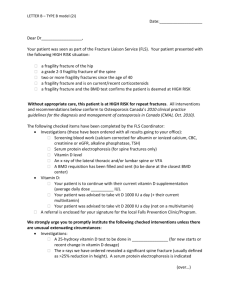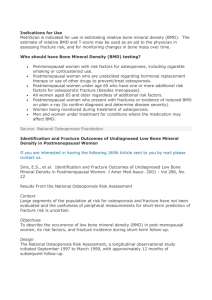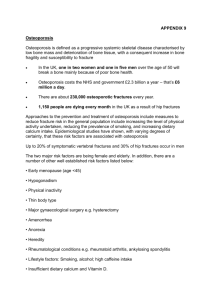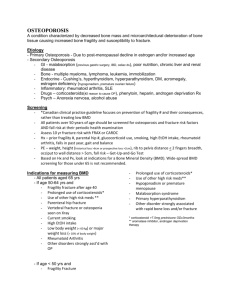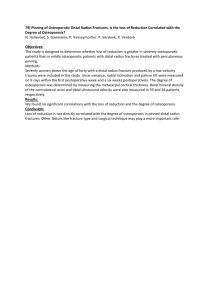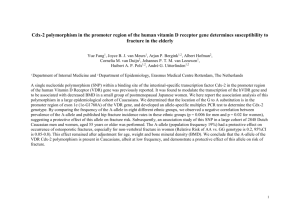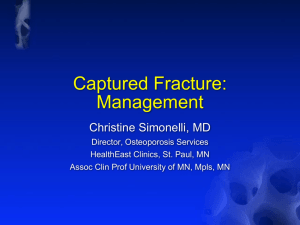Sample job description FLS Coordinator
advertisement
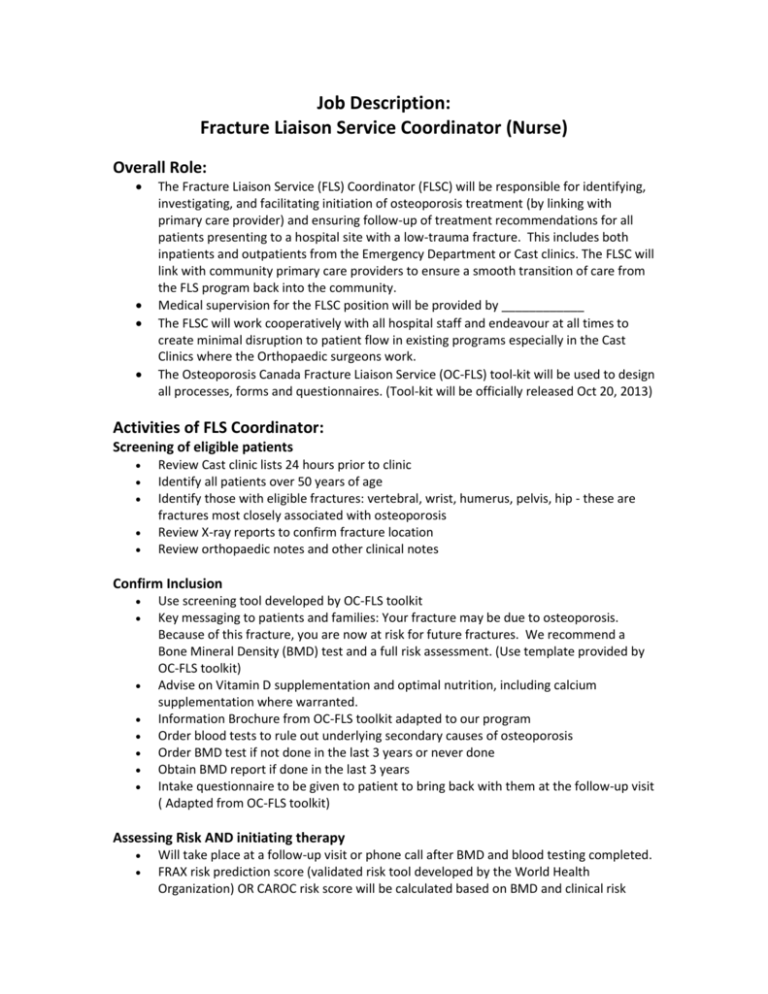
Job Description: Fracture Liaison Service Coordinator (Nurse) Overall Role: The Fracture Liaison Service (FLS) Coordinator (FLSC) will be responsible for identifying, investigating, and facilitating initiation of osteoporosis treatment (by linking with primary care provider) and ensuring follow-up of treatment recommendations for all patients presenting to a hospital site with a low-trauma fracture. This includes both inpatients and outpatients from the Emergency Department or Cast clinics. The FLSC will link with community primary care providers to ensure a smooth transition of care from the FLS program back into the community. Medical supervision for the FLSC position will be provided by ____________ The FLSC will work cooperatively with all hospital staff and endeavour at all times to create minimal disruption to patient flow in existing programs especially in the Cast Clinics where the Orthopaedic surgeons work. The Osteoporosis Canada Fracture Liaison Service (OC-FLS) tool-kit will be used to design all processes, forms and questionnaires. (Tool-kit will be officially released Oct 20, 2013) Activities of FLS Coordinator: Screening of eligible patients Review Cast clinic lists 24 hours prior to clinic Identify all patients over 50 years of age Identify those with eligible fractures: vertebral, wrist, humerus, pelvis, hip - these are fractures most closely associated with osteoporosis Review X-ray reports to confirm fracture location Review orthopaedic notes and other clinical notes Confirm Inclusion Use screening tool developed by OC-FLS toolkit Key messaging to patients and families: Your fracture may be due to osteoporosis. Because of this fracture, you are now at risk for future fractures. We recommend a Bone Mineral Density (BMD) test and a full risk assessment. (Use template provided by OC-FLS toolkit) Advise on Vitamin D supplementation and optimal nutrition, including calcium supplementation where warranted. Information Brochure from OC-FLS toolkit adapted to our program Order blood tests to rule out underlying secondary causes of osteoporosis Order BMD test if not done in the last 3 years or never done Obtain BMD report if done in the last 3 years Intake questionnaire to be given to patient to bring back with them at the follow-up visit ( Adapted from OC-FLS toolkit) Assessing Risk AND initiating therapy Will take place at a follow-up visit or phone call after BMD and blood testing completed. FRAX risk prediction score (validated risk tool developed by the World Health Organization) OR CAROC risk score will be calculated based on BMD and clinical risk factors. Note that in the case of hip fracture or clinical vertebral fractures a BMD is not required to score them, as they are deemed at high risk irrespective of BMD test results and good candidates to benefit from treatment. Assess patients as moderate, high risk of future fracture over next 10 years Letters to primary care provider will be sent for all patients regardless of disposition (Letter templates to be adapted from OC-FLS toolkit) Moderate risk patients are referred back to Primary Care Provider and not managed within the FLS model. High risk patients will be recommended for osteoporosis therapy to be be initiated by the patient’s PCP Complex patients will be referred to Metabolic Bone or Osteoporosis Clinic for further assessment (e.g. patient on systemic corticosteroids, who fracture while on adequate antiresorptive therapy, with many co-morbidities, who present with subtrochanteric/femoral shaft fractures, etc.) Screening for high risk for falls and appropriate referral made if required for further falls assessment and intervention Follow up of patients to ensure that everything is understood and those initiated on treatment are compliant. Outcome measures assessed at each follow-up. (Follow-up questionnaires will be adapted from OC-FLS toolkit)
